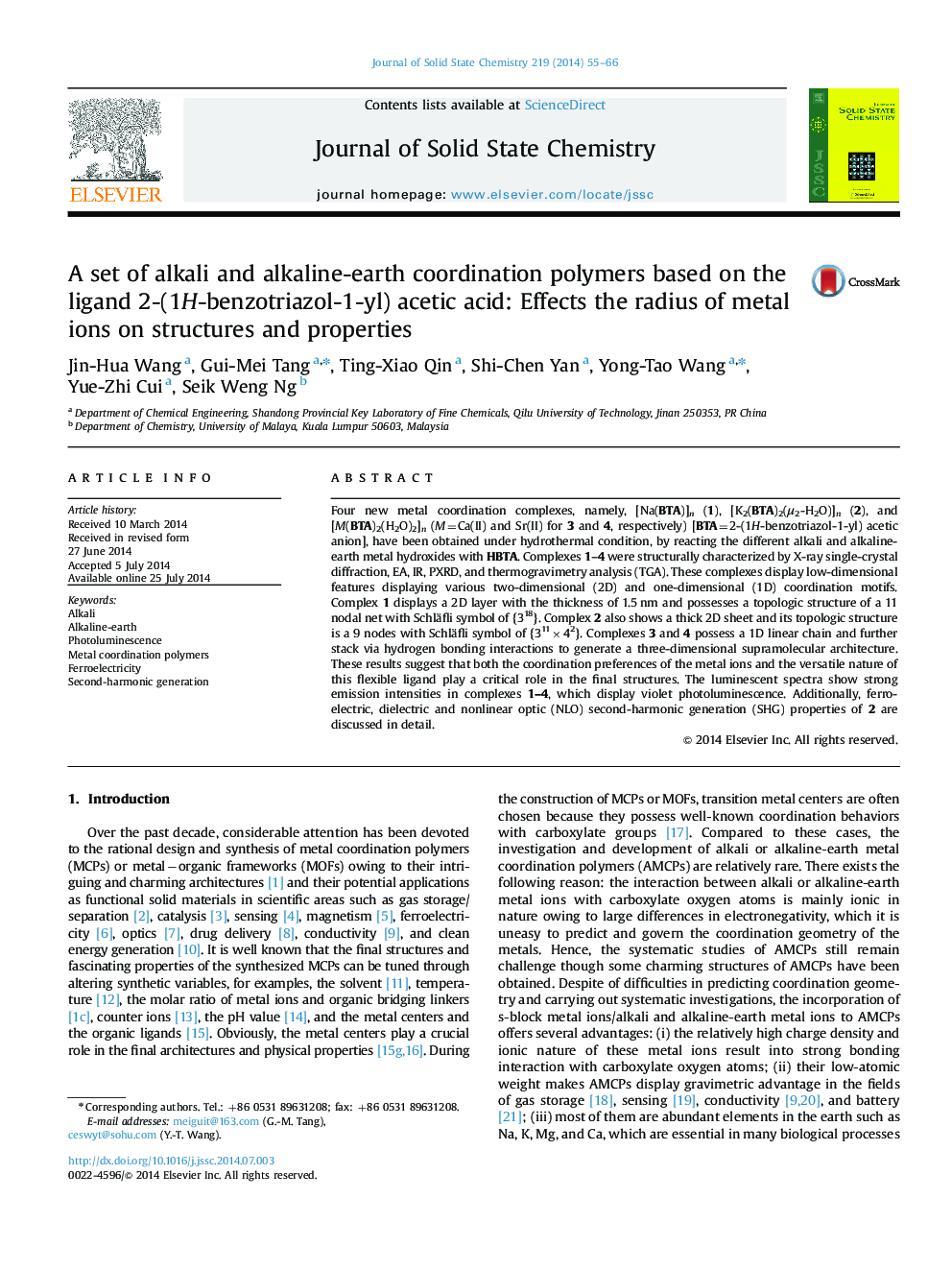| کد مقاله | کد نشریه | سال انتشار | مقاله انگلیسی | نسخه تمام متن |
|---|---|---|---|---|
| 1330156 | 1500097 | 2014 | 12 صفحه PDF | دانلود رایگان |

• Alkali and alkaline-earth metal coordination polymers have been obtained.
• The ligand 2-(1H-benzotriazol-1-yl)acetic acid has been adopted.
• The two-dimensional and one-dimensional structures have been observed.
• The properties of second harmonic generation and ferroelectricity for complex 2.
Four new metal coordination complexes, namely, [Na(BTA)]n (1), [K2(BTA)2(μ2-H2O)]n (2), and [M(BTA)2(H2O)2]n (M=Ca(II) and Sr(II) for 3 and 4, respectively) [BTA=2-(1H-benzotriazol-1-yl) acetic anion], have been obtained under hydrothermal condition, by reacting the different alkali and alkaline-earth metal hydroxides with HBTA. Complexes 1–4 were structurally characterized by X-ray single-crystal diffraction, EA, IR, PXRD, and thermogravimetry analysis (TGA). These complexes display low-dimensional features displaying various two-dimensional (2D) and one-dimensional (1D) coordination motifs. Complex 1 displays a 2D layer with the thickness of 1.5 nm and possesses a topologic structure of a 11 nodal net with Schläfli symbol of {318}. Complex 2 also shows a thick 2D sheet and its topologic structure is a 9 nodes with Schläfli symbol of {311×42}. Complexes 3 and 4 possess a 1D linear chain and further stack via hydrogen bonding interactions to generate a three-dimensional supramolecular architecture. These results suggest that both the coordination preferences of the metal ions and the versatile nature of this flexible ligand play a critical role in the final structures. The luminescent spectra show strong emission intensities in complexes 1–4, which display violet photoluminescence. Additionally, ferroelectric, dielectric and nonlinear optic (NLO) second-harmonic generation (SHG) properties of 2 are discussed in detail.
A set of alkali and alkaline-earth metal coordination polymers were hydrothermally synthesized by 2-(1H-benzotriazol-1-yl)acetic acid, displaying interesting topologic motifs from two-dimension to one-dimension and specific physical properties.Figure optionsDownload as PowerPoint slide
Journal: Journal of Solid State Chemistry - Volume 219, November 2014, Pages 55–66